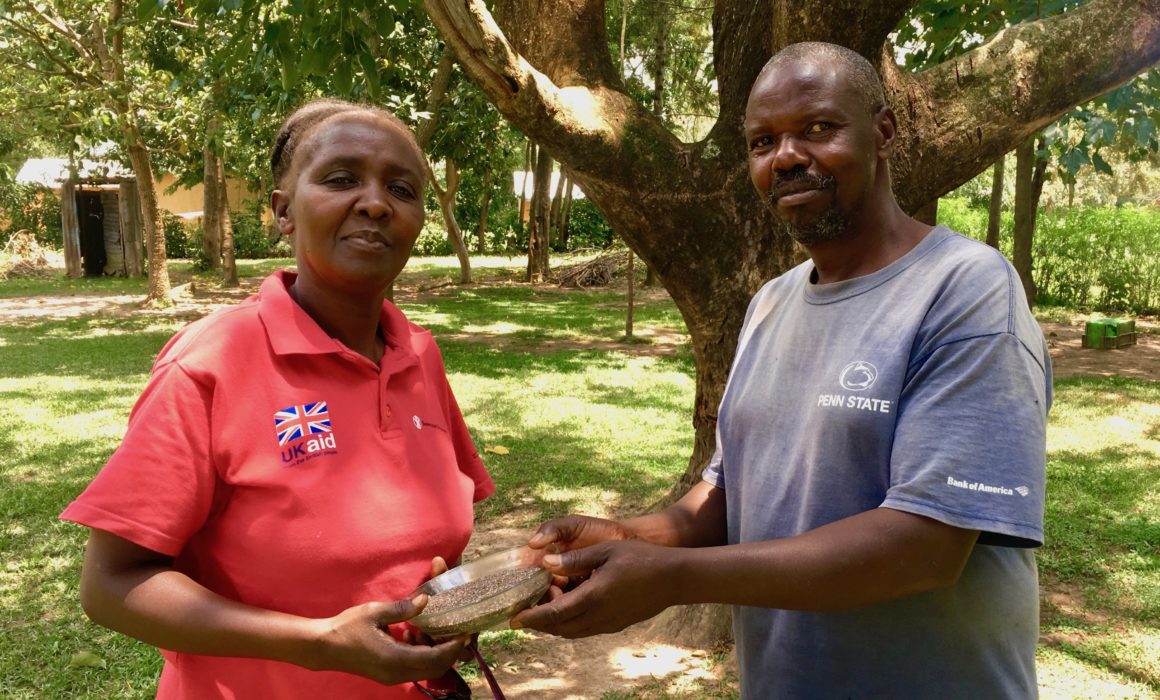There are many good reasons for farmers to throw themselves into chia farming. For the new farmer Enock Asena, the greatest benefit of growing chia seeds is their health value.
Last week, 15 farmers gathered in the garden of Enock Asena. Not so long ago, Enock heard about this new seed in the area called chia. His sister had become involved with Momentum and had started growing chia in her fields, which made Enock interested.
“Many people here don’t know about chia. It’s a new seed on the market. After having discovered chia, I see so many good reasons to grow it!”
When I ask Enock about all these good reasons, he first explains that chia is for him a cash crop. That means it is a food product that is not grown for his household’s consumption, but to be sold to generate an income.

Enock Asena and his wife do not only grow chia to earn money. The couple also grows it because of the seeds’ health benefits, and they eat chia seeds on a daily basis.
The second reason – and the most important benefit – is according to Enock the health value of chia. Chia seeds are very nutritious and rich in fibre, protein, and minerals such as calcium. Because of the fibre, chia makes one feel full and they are a good source of plant protein.
“I eat chia seeds everyday! I ate it this morning mixed with hot water. I mix it with all kinds of food and eat it either in the morning or in the night. I have done so since I discovered chia last year,” Enock tells me very enthusiastically.
In fact, Enock is so enthusiastic about the potential in chia that he has taken initiative to arrange chia trainings. That is why the 15 farmers are in his garden today and that Momentum staff is there as trainers.
“I have mobilized these farmers and they are very impressed by the potential of chia farming. They don’t only see it as a good cash crop; it is also easy to grow! First of all, it only takes three months from planting to harvest*. Second of all, there is no need for fertilizer. We can grow chia organically,” Enock explains.
To Enock, chia is not only healthy because of its nutritional value, but also because the farmers avoid using fertilizer, which Enock refers to as “chemicals you put into your body”.
This season, Enock will devote just a small plot of his land to chia as a test on how to plant and treat it. But he has high hopes for next year.
“Come back next year and you’ll see for yourself that three fourths of my land will be planted with chia!”
That is how Enock ends the interview, right before we get started with the training. I certainly cannot wait to hear how Enock’s chia testing will go this season.
*Many other crops take much longer. For instance, for maize it takes 5 months from planting to harvest and sugar cane it is at least 18 months.
Astrid Melchior Olesen, Momentum Trust intern

